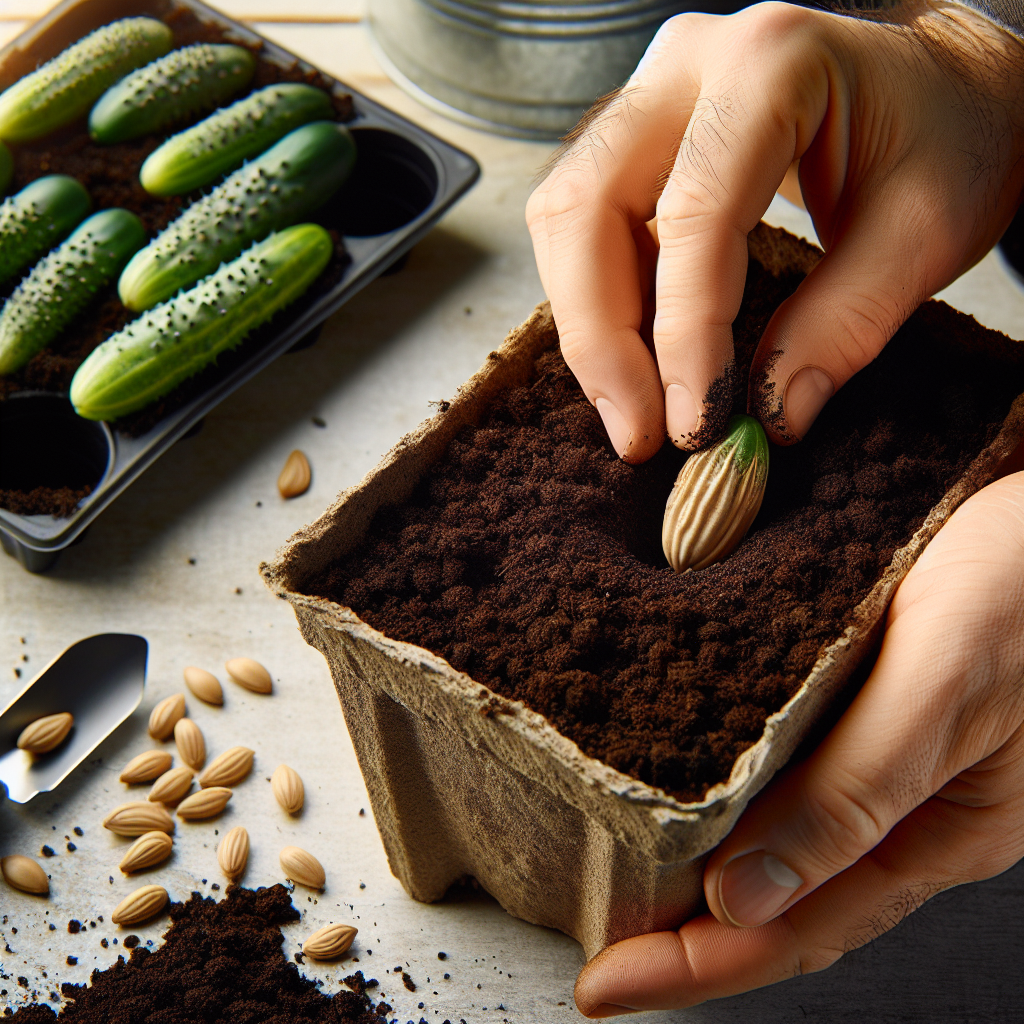
How do you sow cucumber seeds
A Beginner’s Guide to Sowing Cucumber Seeds
Cucumbers are a refreshing addition to any garden, known for their crisp texture and juicy flavor. If you’re considering adding these delightful vegetables to your edible landscape, you may be wondering how do you sow cucumber seeds? This guide will walk you through the process, from preparing your garden beds to nurturing your seedlings.
Understanding Cucumber Varieties
Before diving into the sowing process, it's essential to understand the different types of cucumber varieties available. Each has unique characteristics, growth habits, and flavors. Here are the main types:
- Slicing Cucumbers: These are the standard cucumbers you'll find in grocery stores. They have a smooth, dark green skin and are great for fresh eating in salads and sandwiches.
- Pickling Cucumbers: Smaller and bumpier, these cucumbers are specifically bred for pickling and preservation.
- European Cucumbers: Longer and thinner with fewer seeds, these cucumbers are often sold wrapped in plastic to preserve their moisture.
- Garden Cucumbers: These cucumbers are best for home gardens and are typically eaten fresh or picked at their young stage.
When to Sow Cucumber Seeds
Timing is everything when it comes to growing cucumbers. They thrive in warm weather and prefer to be sown after the last frost date in your area:
- Check your local frost dates to determine the best time for sowing.
- Typically, cucumbers are sown in early to mid-spring.
- Soil temperature should be at least 70°F (21°C) for the best germination rates.
Preparing the Soil for Cucumber Seeds
A successful cucumber crop starts with healthy soil. Follow these guidelines to prepare it for sowing:
- Choose the Right Location: Cucumbers require full sun; find a spot in your garden that receives at least 6-8 hours of sunlight daily.
- Soil Quality: Aim for well-draining, fertile soil with a pH between 6.0 and 7.0.
- Add Organic Matter: Incorporate compost or aged manures to improve soil fertility and structure.
Sowing Cucumber Seeds: The Step-by-Step Process
Now that you know when and how to prepare your soil, let’s explore the actual process of sowing cucumber seeds:
- Prepare the Seed: If you're using seeds from a store, soak them in water for a few hours to enhance germination.
- Create Trenches or Hills: Cucumber plants benefit from being planted in hills or rows. For hills, form small mounds of soil about 3 feet apart with 3-5 seeds per mound.
- Plant the Seeds: Place cucumber seeds about 1 inch (2.5 cm) deep in the prepared mounds or trenches. Cover lightly with soil.
- Watering: Gently water the area after planting to moisten the soil without washing away the seeds.
- Mulch: Consider adding a layer of mulch to retain moisture and suppress weeds.
Care for Your Cucumber Seeds
Once you've sown your seeds, it’s time to focus on care and maintenance:
- Regular Watering: Keep the soil consistently moist, especially during dry spells. Cucumbers prefer deep, infrequent watering.
- Thinning Seedlings: Once your cucumber seedlings emerge and have a few true leaves, thin them, leaving the strongest plants to grow.
- Fertilizing: After seedlings are established, start feeding every 2-4 weeks with a balanced fertilizer.
- Pest Control: Watch for pests such as aphids and cucumber beetles. Early intervention with organic methods can prevent infestations.
Helping Your Cucumbers Thrive
As your cucumbers grow, consider some additional tips to ensure a bountiful harvest:
- Trellising: If space is limited, or if you want cleaner cucumbers, construct a trellis for your cucumber plants to climb.
- Monitor for Diseases: Look out for signs of powdery mildew or wilt. Early detection is key.
- Harvesting: Pick cucumbers regularly to encourage further production. Aim to harvest when they are firm and a vibrant green.
Common Mistakes When Sowing Cucumber Seeds
Many novice gardeners make the same mistakes when sowing cucumber seeds. Here are some common pitfalls to avoid:
- Planting Too Early: Cucumbers need warm soil and air temperatures. Planting too early can hinder growth.
- Ignoring Space Requirements: Cucumbers require ample space to grow, so don’t overcrowd your plants.
- Neglecting Watering Needs: Consistency is crucial; don’t let the soil dry out, especially during hot weather.
Benefits of Growing Cucumbers
Not only are cucumbers easy to grow, but they also offer several benefits:
- Health Benefits: Cucumbers are low in calories yet high in vitamins and minerals. They're an excellent addition to a healthy diet.
- Aesthetic Appeal: The sprawling vines and bright green leaves can beautify your garden or vegetable patch.
- Cost-Effective: Growing your cucumbers can save money, especially during summer when prices can soar.
Conclusion
In summary, growing cucumbers from seeds is a rewarding endeavor that involves careful planning, preparation, and a little patient care. Now that you know how do you sow cucumber seeds and nurture them, you’re well on your way to enjoying fresh, crunchy cucumbers right from your garden.
"Gardening adds years to your life and life to your years." – Unknown
Whether you’re planning to slice them into salads, turn them into pickles, or enjoy them fresh, your backyard cucumbers will surely be a delightful addition to your culinary repertoire. Happy gardening!
By Guest, Published on September 28th, 2024